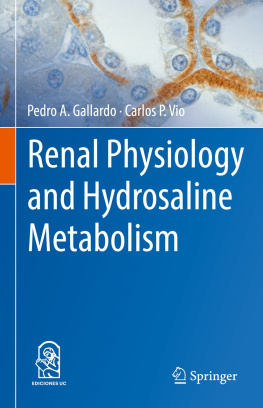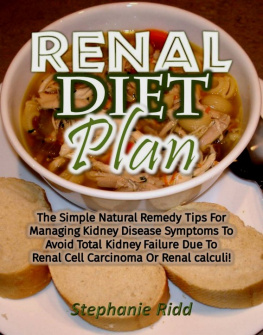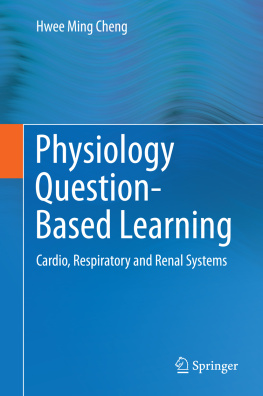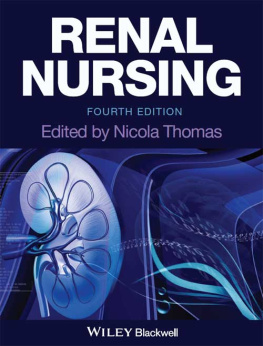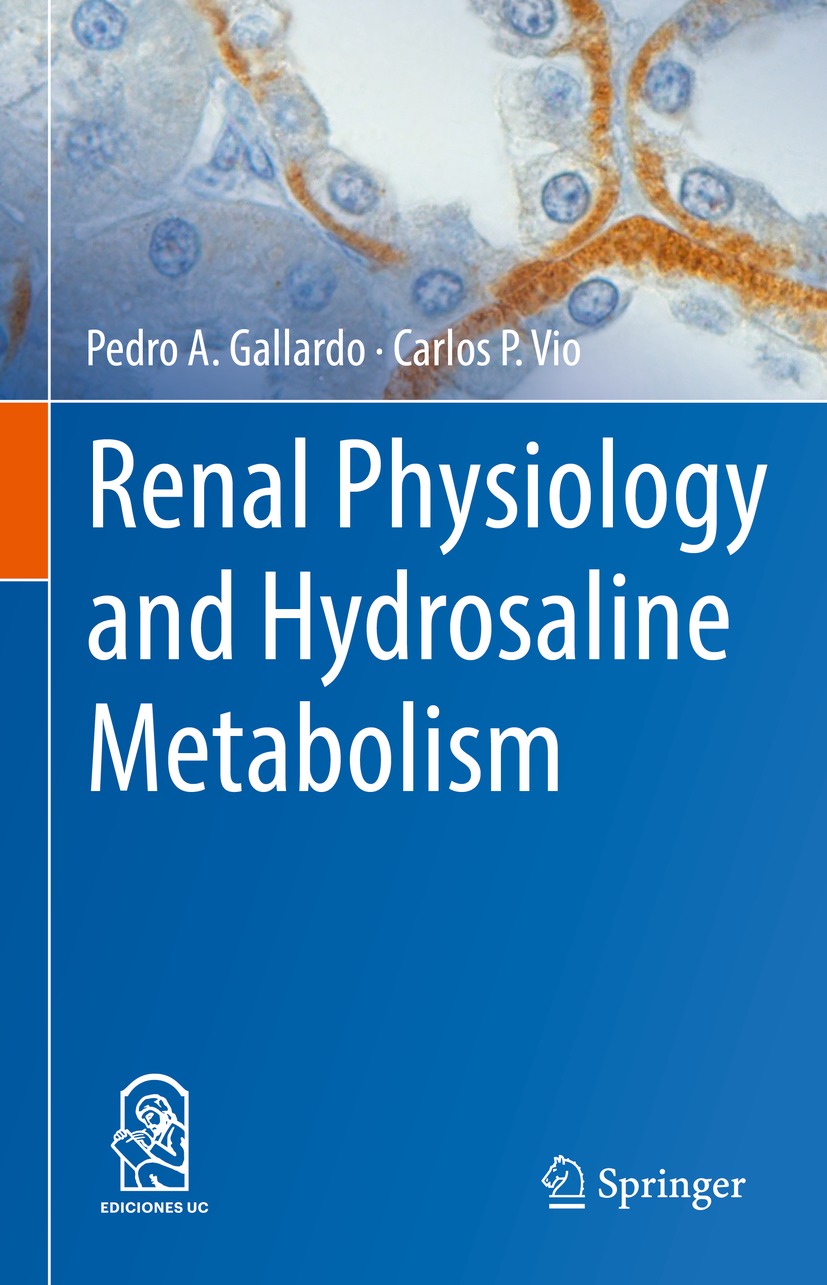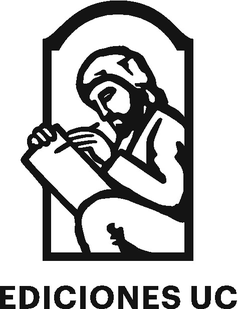Pedro A. Gallardo
Unit of Basic Science, Faculty of Medicine, Finis Terrae University, Santiago, RM - Santiago, Chile
Carlos P. Vio
Faculty of Medicine and Science, San Sebastian University, Santiago, Chile
ISBN 978-3-031-10255-4 e-ISBN 978-3-031-10256-1
https://doi.org/10.1007/978-3-031-10256-1
Jointly published with EdicionesUC
Translation from the Spanish language edition: Fisiologa Renal y Metabolismo Hidrosalino. Segunda edicin. By Pedro A. Gallardo and Carlos P. Vio, Ediciones Universidad Catlica de Chile, 2018. Original Publication ISBN 9789561422605. All rights reserved.
The translation was done with the help of artificial intelligence (machine translation by the service DeepL.com). A subsequent human revision was done primarily in terms of content.
Springer Nature Switzerland AG 2022
This work is subject to copyright. All rights are reserved by the Publishers, whether the whole or part of the material is concerned, specifically the rights of reprinting, reuse of illustrations, recitation, broadcasting, reproduction on microfilms or in any other physical way, and transmission or information storage and retrieval, electronic adaptation, computer software, or by similar or dissimilar methodology now known or hereafter developed.
The use of general descriptive names, registered names, trademarks, service marks, etc. in this publication does not imply, even in the absence of a specific statement, that such names are exempt from the relevant protective laws and regulations and therefore free for general use.
The publishers, the authors, and the editors are safe to assume that the advice and information in this book are believed to be true and accurate at the date of publication. Neither the publishers nor the authors or the editors give a warranty, expressed or implied, with respect to the material contained herein or for any errors or omissions that may have been made. The publishers remain neutral with regard to jurisdictional claims in published maps and institutional affiliations.
This Springer imprint is published by the registered company Springer Nature Switzerland AG
The registered company address is: Gewerbestrasse 11, 6330 Cham, Switzerland
Preface to the Second Edition
As the first edition, this second edition of Renal Physiology and Hydrosaline Metabolism is dedicated to medical and health sciences, and biology students as well as professional in these areas. This updated and revised edition in English is a translation of the second edition in Spanish, published by Ediciones UC. This title was selected by Springer Nature and Ediciones Universidad Catlica to be translated and published in English. The authors are indebted to the publishers for this recognition and opportunity to reach a broader spectrum of readers.
Important advances in the field of renal physiology had occurred since the publishing of the first edition. In this second edition, we incorporated those advances in knowledge that we felt were important for students and professionals. Several chapters were rewritten to incorporate new relevant issues. For example, in Chap. is a new chapter concerning genetic alterations in tubular transport of Na+, Cl, K+, and water. We felt that this chapter was important for two reasons. First, it highlights the impact of molecular biology in understanding renal physiology. Second, from the pedagogical standpoint, the chapter underlines the relevance of specific proteins in the function of a given tubular segment. This is accomplished through the analysis of the impact of specific protein mutations in the function of the tubular segment and how this affects the function of downriver segments and whole electrolyte and water balance.
At the beginning of each chapter, the authors included a list of learning objectives that guide the reader about the goals of the chapter. At the end of each chapter, there is a list of review questions; the answer to each question requires the application of specific contents in the chapter. All the answers to review questions are contained in Chap..
Chapter is devoted to biologists and to all students interested in osmoregulation in non- mammalian vertebrates. The authors felt that biologists should have a broader knowledge about osmoregulation than the study of the mammalian kidney.
We want to thank the overwhelming number of comments from medicine students from Pontificia Universidad Catlica and Universidad Finis Terrae who encouraged us to write this second and updated edition, and to the Universidad San Sebastin.
We are deeply indebted to Mr. Carlos Cspedes for his invaluable help in reviewing the manuscript and figures and to Ms. Fernanda Carter for her valuable help. We also thank the artwork originally made by Fabiola Solari and enriched by Felipe Serrano.
Pedro A. Gallardo
Carlos P. Vio
Santiago, Chile
Acknowledgments
We would like to thank Mr. Carlos Cspedes for his rigorous and professional review of the chapters and figures and Felipe Serrano ( www.illustrative-science.com/ ) for vectorizing our draft figures.
This textbook Renal Physiology and Hydrosaline Metabolism has been funded in part by ANID (Agencia Nacional de Investigacin y Desarrollo, Chile) to the Basal Centre of Excellence in Aging and Regeneration CARE (Grant PIA CONICYT ACE210009), and by a donation from SQM to the Basal Center CARE from the Pontificia Universidad Catolica de Chile.

